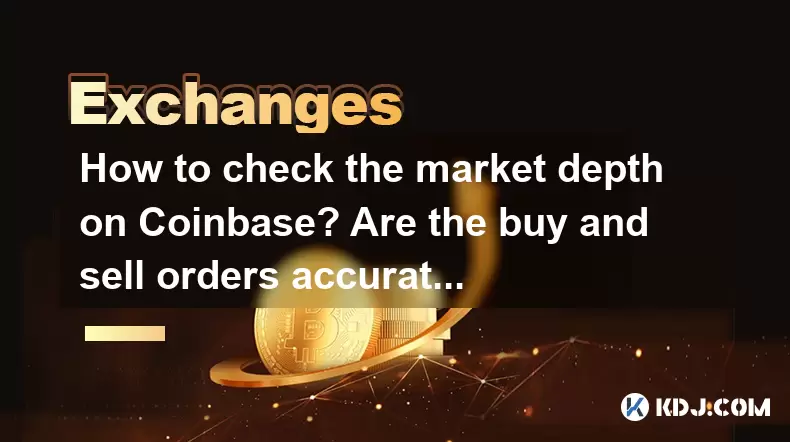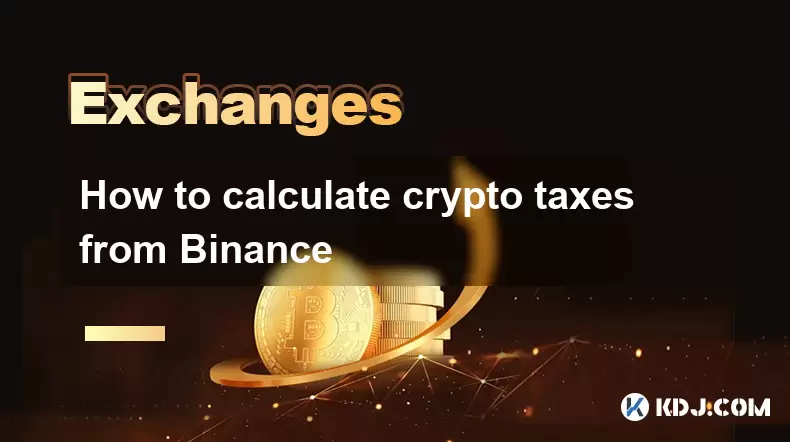-
 Bitcoin
Bitcoin $117500
2.15% -
 Ethereum
Ethereum $3911
6.19% -
 XRP
XRP $3.316
10.79% -
 Tether USDt
Tether USDt $1.000
0.01% -
 BNB
BNB $787.2
2.24% -
 Solana
Solana $175.2
4.15% -
 USDC
USDC $0.9999
0.00% -
 Dogecoin
Dogecoin $0.2225
8.40% -
 TRON
TRON $0.3383
0.28% -
 Cardano
Cardano $0.7868
6.02% -
 Stellar
Stellar $0.4382
9.34% -
 Hyperliquid
Hyperliquid $40.92
7.56% -
 Sui
Sui $3.764
7.63% -
 Chainlink
Chainlink $18.48
10.66% -
 Bitcoin Cash
Bitcoin Cash $582.1
1.88% -
 Hedera
Hedera $0.2601
6.30% -
 Avalanche
Avalanche $23.33
4.94% -
 Ethena USDe
Ethena USDe $1.001
0.02% -
 Litecoin
Litecoin $122.3
2.04% -
 UNUS SED LEO
UNUS SED LEO $8.969
-0.27% -
 Toncoin
Toncoin $3.339
0.86% -
 Shiba Inu
Shiba Inu $0.00001287
4.30% -
 Uniswap
Uniswap $10.43
7.38% -
 Polkadot
Polkadot $3.861
5.08% -
 Dai
Dai $1.000
0.02% -
 Bitget Token
Bitget Token $4.513
3.41% -
 Monero
Monero $267.7
-6.18% -
 Cronos
Cronos $0.1499
4.14% -
 Pepe
Pepe $0.00001110
5.15% -
 Aave
Aave $284.9
8.28%
How to check the market depth on Coinbase? Are the buy and sell orders accurate?
To check market depth on Coinbase, access the order book, analyze bid and ask sides, and use depth charts for a visual representation of liquidity and potential price movements.
May 18, 2025 at 02:50 pm

Understanding how to check market depth on Coinbase and assessing the accuracy of buy and sell orders is crucial for any trader looking to make informed decisions. Market depth refers to the market's ability to sustain relatively large market orders without impacting the price of the security. On Coinbase, this involves looking at the order book, which displays the current buy and sell orders at various price levels. In this article, we will explore how to access and interpret this information, as well as discuss the accuracy of the data provided.
Accessing the Order Book on Coinbase
To begin checking the market depth on Coinbase, you need to access the order book for the cryptocurrency you are interested in. Here are the steps to do so:
- Log into your Coinbase account and navigate to the trading section.
- Select the cryptocurrency pair you want to analyze, such as BTC/USD.
- Look for the "Order Book" or "Depth Chart" tab on the trading interface. This is where you will find the current buy and sell orders.
Once you have accessed the order book, you will see a list of buy and sell orders organized by price level. The order book provides a snapshot of the market depth, showing how many orders are waiting to be filled at different prices.
Understanding the Order Book
The order book on Coinbase displays two main sections: the bid side and the ask side.
- The bid side represents the buy orders, showing the prices at which traders are willing to buy the cryptocurrency and the volume of those orders.
- The ask side represents the sell orders, showing the prices at which traders are willing to sell the cryptocurrency and the corresponding volumes.
By examining these two sides, you can gauge the market depth. A deep market will have a large number of orders at various price levels, indicating that the market can absorb large trades without significant price movement. Conversely, a shallow market will have fewer orders, suggesting that large trades could cause more significant price fluctuations.
Interpreting Market Depth
When interpreting market depth, consider the following aspects:
- Volume at Each Price Level: Look at the volume of orders at each price level. Higher volumes indicate stronger support or resistance at those levels.
- Spread Between Bid and Ask: The difference between the highest bid price and the lowest ask price is known as the spread. A narrow spread often indicates a liquid market with high trading activity.
- Depth of the Order Book: Assess how far the order book extends in terms of price levels. A deeper order book suggests more liquidity and stability.
By analyzing these factors, you can get a better understanding of the market's current state and make more informed trading decisions.
Accuracy of Buy and Sell Orders
The accuracy of buy and sell orders on Coinbase is generally high, but it's important to understand the factors that can affect this accuracy.
- Real-Time Data: Coinbase provides real-time data, meaning the order book is updated instantaneously as new orders are placed or existing orders are filled. This real-time nature helps ensure the accuracy of the displayed orders.
- Order Execution: When you place an order, it is matched with the best available price on the opposite side of the order book. However, there can be slight delays between when an order is placed and when it is executed, which can affect the final execution price.
- Market Volatility: During periods of high volatility, the order book can change rapidly. This can lead to discrepancies between the displayed orders and the actual orders that get filled.
While Coinbase strives to provide accurate and up-to-date information, it's essential to be aware of these factors and use additional tools or platforms to cross-verify the data when making critical trading decisions.
Using Depth Charts for Further Analysis
In addition to the order book, Coinbase also offers depth charts, which provide a visual representation of the market depth. Here's how to use them:
- Navigate to the depth chart on the trading interface after selecting your cryptocurrency pair.
- Observe the shape of the chart: The depth chart typically shows a curve where the x-axis represents the price and the y-axis represents the cumulative volume of orders.
- Analyze the bid and ask sides: The left side of the chart represents the bid side, while the right side represents the ask side. The steeper the curve, the less liquidity at that price level.
Depth charts can help you quickly identify areas of high liquidity and potential support or resistance levels, complementing the information provided by the order book.
Practical Tips for Using Market Depth Information
To make the most of the market depth information on Coinbase, consider the following tips:
- Monitor Changes Over Time: Keep an eye on how the order book evolves throughout the trading day. Significant shifts in the order book can signal upcoming price movements.
- Combine with Technical Analysis: Use market depth data alongside technical indicators to get a more comprehensive view of the market.
- Set Alerts: Use trading platforms that allow you to set alerts for specific price levels or changes in the order book, helping you stay informed without constantly monitoring the market.
By integrating these practices into your trading strategy, you can enhance your ability to interpret market depth and make more informed decisions.
Frequently Asked Questions
Q: Can I trade directly from the order book on Coinbase?
A: Yes, you can place buy and sell orders directly from the order book on Coinbase. Simply click on the price level at which you want to place your order, and the platform will execute it based on the current market conditions.
Q: How often is the order book on Coinbase updated?
A: The order book on Coinbase is updated in real-time, meaning it reflects the most current buy and sell orders as they are placed or filled.
Q: Does Coinbase provide historical data on market depth?
A: Coinbase does not provide historical data on market depth directly through its platform. However, you can use third-party tools and APIs to access historical order book data for further analysis.
Q: Can market depth be manipulated on Coinbase?
A: While it is possible for market participants to attempt to manipulate market depth by placing and canceling large orders, Coinbase has measures in place to detect and mitigate such activities. It's always important to be cautious and use multiple sources of information when trading.
Disclaimer:info@kdj.com
The information provided is not trading advice. kdj.com does not assume any responsibility for any investments made based on the information provided in this article. Cryptocurrencies are highly volatile and it is highly recommended that you invest with caution after thorough research!
If you believe that the content used on this website infringes your copyright, please contact us immediately (info@kdj.com) and we will delete it promptly.
- XRP ETF, Bitcoin ETF, and Japan: A New Era for Crypto Investing?
- 2025-08-08 14:30:12
- Crypto, Congress, and Bills: Navigating the Regulatory Landscape in 2025
- 2025-08-08 14:30:12
- Union Jack Oil, Unused Gas, and Bitcoin: A New York Minute on UK's Crypto-Energy Play
- 2025-08-08 14:50:12
- Bitcoin Price: Bullish Flag Points to $123K Breakout?
- 2025-08-08 14:50:12
- Crypto Group's WNBA Dildo Toss: Meme Coin Mania or Just Plain Dumb?
- 2025-08-08 14:55:13
- Stablecoins, Hong Kong, and On-Chain Finance: Navigating the Regulatory Maze
- 2025-08-08 12:30:12
Related knowledge

How to use margin trading on Poloniex
Aug 08,2025 at 09:50am
Understanding Margin Trading on Poloniex

How to use advanced trading on Gemini
Aug 08,2025 at 04:07am
Understanding Advanced Trading on GeminiAdvanced trading on Gemini refers to a suite of tools and order types designed for experienced traders who wan...

How to deposit USD on Bitstamp
Aug 07,2025 at 05:18pm
Understanding Bitstamp and USD DepositsBitstamp is one of the longest-standing cryptocurrency exchanges in the industry, offering users the ability to...

How to use the Kraken Pro interface
Aug 08,2025 at 09:57am
Understanding the Kraken Pro Interface LayoutThe Kraken Pro interface is designed for both novice and experienced traders seeking a streamlined experi...

How to find my transaction ID on Gemini
Aug 08,2025 at 12:50am
Understanding the Transaction ID in Cryptocurrency ExchangesA transaction ID (TXID) is a unique alphanumeric string that identifies a specific transfe...

How to calculate crypto taxes from Binance
Aug 08,2025 at 07:56am
Understanding Cryptocurrency Taxation on BinanceCalculating crypto taxes from Binance requires a clear understanding of how tax authorities classify d...

How to use margin trading on Poloniex
Aug 08,2025 at 09:50am
Understanding Margin Trading on Poloniex

How to use advanced trading on Gemini
Aug 08,2025 at 04:07am
Understanding Advanced Trading on GeminiAdvanced trading on Gemini refers to a suite of tools and order types designed for experienced traders who wan...

How to deposit USD on Bitstamp
Aug 07,2025 at 05:18pm
Understanding Bitstamp and USD DepositsBitstamp is one of the longest-standing cryptocurrency exchanges in the industry, offering users the ability to...

How to use the Kraken Pro interface
Aug 08,2025 at 09:57am
Understanding the Kraken Pro Interface LayoutThe Kraken Pro interface is designed for both novice and experienced traders seeking a streamlined experi...

How to find my transaction ID on Gemini
Aug 08,2025 at 12:50am
Understanding the Transaction ID in Cryptocurrency ExchangesA transaction ID (TXID) is a unique alphanumeric string that identifies a specific transfe...

How to calculate crypto taxes from Binance
Aug 08,2025 at 07:56am
Understanding Cryptocurrency Taxation on BinanceCalculating crypto taxes from Binance requires a clear understanding of how tax authorities classify d...
See all articles

























































































